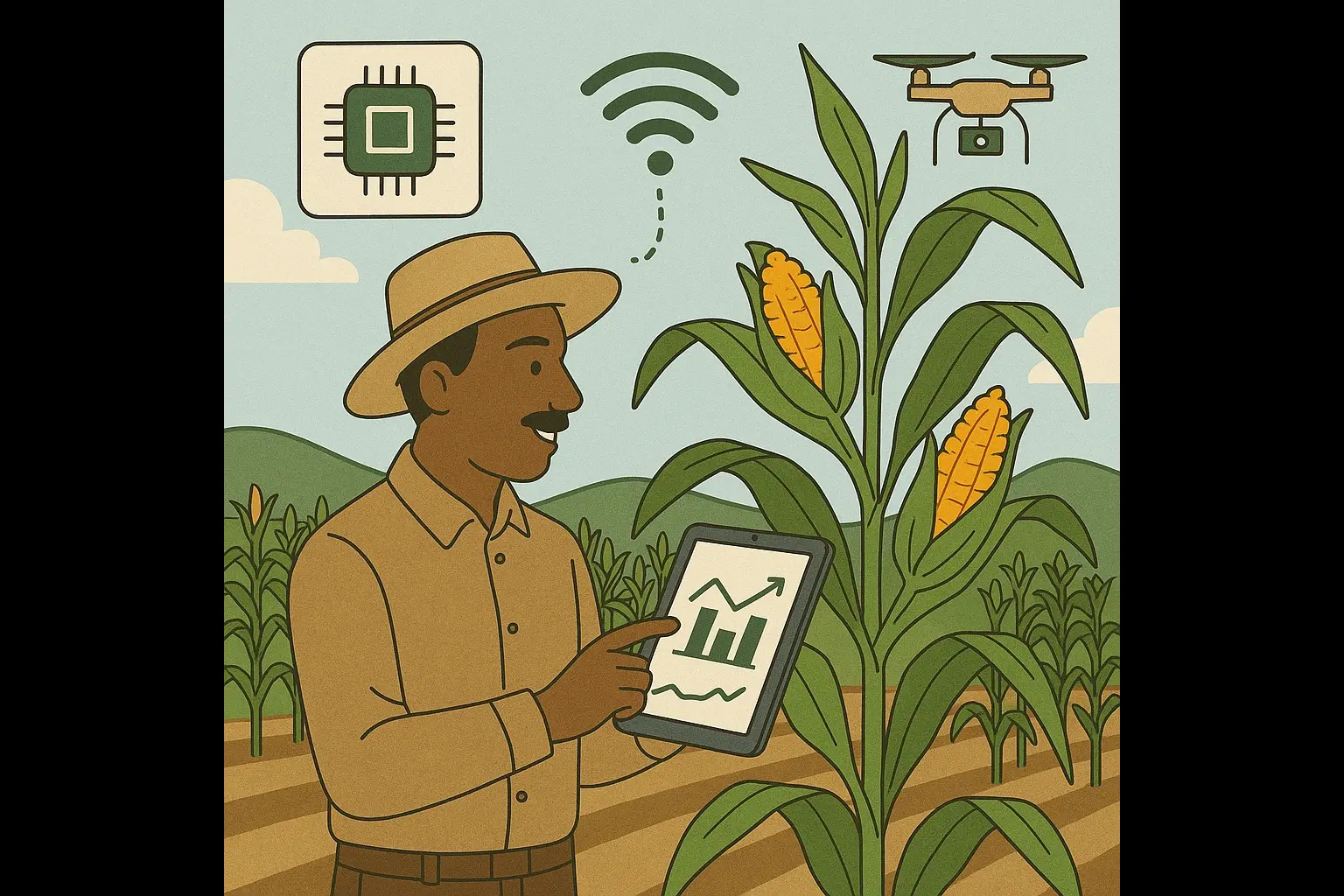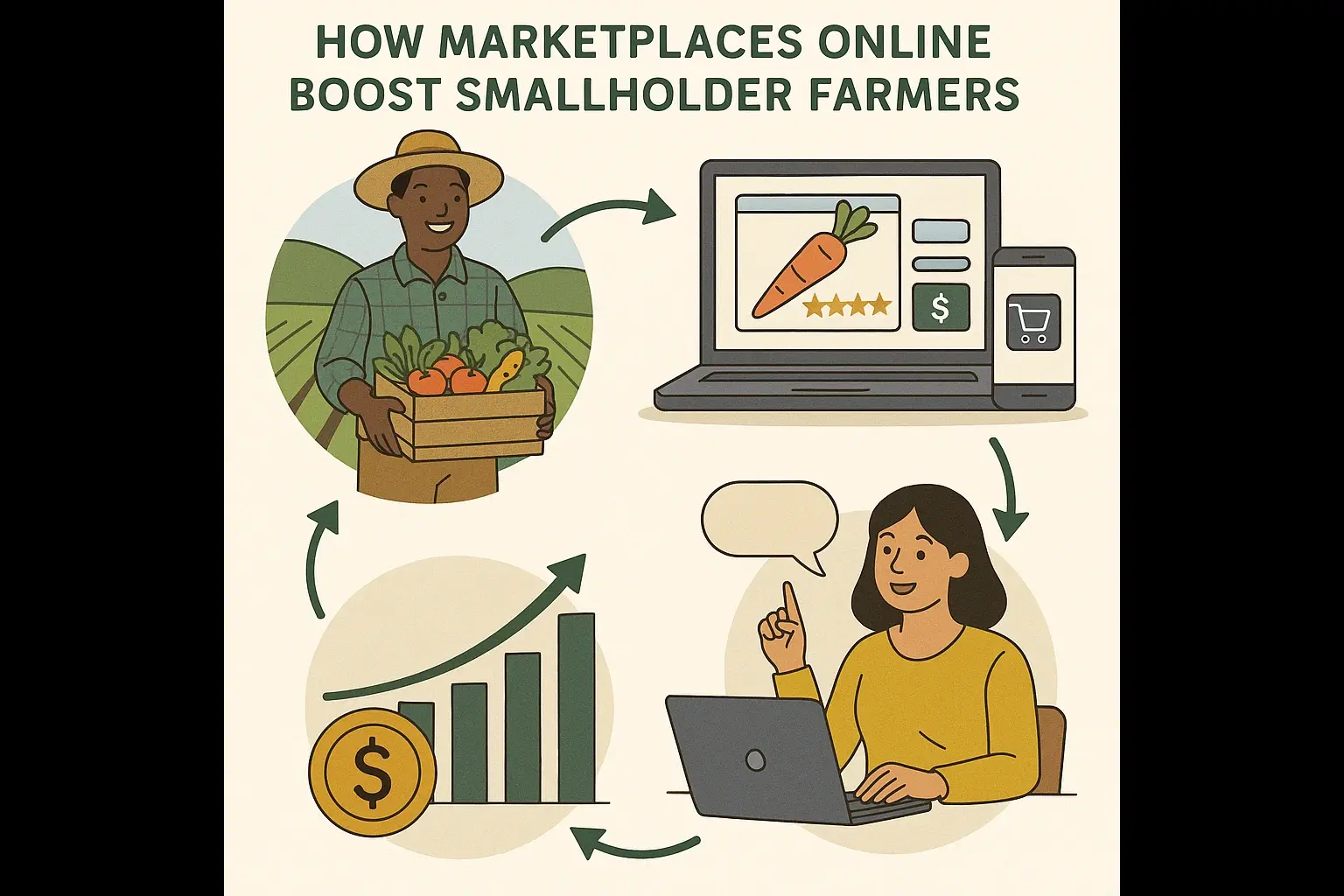Introduction
Smallholder farmers form the backbone of agriculture across India and much of the world. Yet, despite contributing significantly to food production, they face constant challenges, limited access to buyers, dependence on middlemen, and inconsistent pricing for their crops. In recent years, digital platforms have emerged as a powerful tool to close these gaps. By creating direct connections between farmers and buyers, they are rewriting the story of agricultural trade.
This article explores how digital-driven marketplaces are empowering smallholder farmers, helping them secure better prices, and giving them tools to thrive in a modern economy.
Digital Transformation in Agriculture

For decades, farmers relied almost exclusively on local mandis or traders to sell their produce. While these markets remain important, they often involve multiple intermediaries, leaving farmers with only a small share of the final value.
The rise of smartphones, internet access, and agritech innovations is changing this landscape. Today, digital platforms allow farmers to list their crops online, connect with wholesale buyers, retailers, and even direct consumers, while receiving instant updates on demand and pricing. This shift not only modernizes trading but also gives farmers greater control over their produce.
Bridging the Market Gap
One of the biggest hurdles smallholder farmers face is limited reach. Most sales happen locally, restricting them to a small pool of buyers. Digital solutions help bridge this gap by:
Connecting Farmers to Larger Markets – Farmers can now sell beyond their villages or towns, reaching buyers in cities, across states, and even in global markets.
Reducing Dependence on Middlemen – Direct transactions improve transparency and ensure fairer trade.
Expanding Opportunities – A smallholder farmer with seasonal produce can tap into demand-driven opportunities and negotiate better deals.
For example, in many states, farmers who once sold surplus vegetables at throwaway prices locally are now finding buyers in urban centers through digital trading channels.
Economic Advantages for Farmers
Digital access is not just about visibility, it directly impacts farmers’ incomes and financial stability.
Transparent Pricing: Farmers get real-time price updates, making it harder for buyers to undervalue their crops.
Stable Income: Access to multiple buyers helps reduce risks tied to a single market.
Data-Driven Planning: By knowing what buyers need in advance, farmers can plan their crop cycles more strategically, minimizing waste.
These benefits empower farmers to become entrepreneurs, rather than passive participants in the value chain.
Beyond Sales: Integrated Services
Online platforms today offer much more than just a space to sell produce. They provide a 360-degree support system that addresses farmers’ broader needs:
Financial Services: Access to microcredit, insurance, and digital payments makes transactions safer and more inclusive.
Logistics & Storage: Partnerships with logistics providers reduce post-harvest losses by ensuring crops reach markets quickly. Cold storage facilities are particularly important for perishable items like fruits and vegetables.
Knowledge Sharing: Farmers receive updates on market demand, weather forecasts, and best practices, which improves productivity and reduces risk.
These services create a reliable ecosystem where farmers are not only sellers but active decision-makers in their supply chains.
Case Studies
The transformation brought by digital solutions is best illustrated through real-life examples:
1. Pomegranate Farmers in Maharashtra
A cooperative of smallholder pomegranate farmers in Maharashtra faced huge post-harvest losses due to oversupply in local mandis. By using a digital trading platform, they could directly connect with urban wholesalers and retailers. This allowed them to:
Sell their produce at fair market prices without middlemen.
Reduce losses by 30% through faster sales and better storage planning.
Gain insights into demand cycles, enabling strategic harvesting.
2. Collective Vegetable Farmers in Uttar Pradesh
In northern India, smallholder vegetable farmers struggled to transport their crops efficiently. Through a mobile-based agri-tech platform, they organized collective logistics and accessed larger markets. The results were significant:
Transportation costs reduced by nearly 25% through shared resources.
Farmers secured higher prices by directly negotiating with buyers in nearby cities.
Enhanced confidence and financial stability allowed them to invest in improved seeds and farming techniques.
3. Multi-Crop Farmers in Karnataka
Farmers growing multiple crops in Karnataka leveraged digital marketplaces to reach consumers and local grocery stores. They benefited from:
Real-time pricing updates that helped them decide when and where to sell.
Ability to plan crop cycles based on market demand, reducing unsold inventory.
Access to integrated services like digital payments and crop advisory, making the overall farming process more efficient and profitable.
These examples demonstrate that when technology is applied thoughtfully, farmers not only improve their incomes but also gain autonomy, knowledge, and confidence. Digital platforms are empowering smallholders to transition from traditional, fragmented market access to a more predictable and profitable system.
Challenges Hindering Growth
Despite these benefits, certain barriers slow down the widespread adoption of digital platforms in agriculture:
Digital Literacy – Many farmers, especially older generations, are unfamiliar with mobile apps and online trading.
Connectivity Gaps – Rural areas still struggle with weak internet infrastructure.
Trust and Transparency – Farmers need assurance that digital platforms will offer fair pricing and timely payments.
Overcoming these challenges will require collaboration between governments, private companies, and local communities to ensure inclusive adoption.
Future Outlook
The next wave of agricultural trade will be shaped by advanced technologies.
Artificial Intelligence (AI) can predict demand patterns and recommend best crops to grow.
Blockchain ensures traceability, helping farmers command better prices by proving the authenticity and quality of their produce.
Internet of Things (IoT) tools can link production data to market demand, reducing mismatches and wastage.
With supportive government policies and private sector investment, digital-first farming can boost food security, reduce poverty, and create sustainable livelihoods for millions of smallholder farmers.
Conclusion
The rise of digital trading platforms is more than just a technological trend, it’s a lifeline for smallholder farmers who have long been underserved by traditional systems. By expanding market access, improving transparency, and offering integrated services, these platforms are helping farmers secure fair prices and stable incomes.
StarAgri, Leading the Way in Agritech Services
As one of India’s leading agritech service providers, StarAgri has been at the forefront of empowering farmers with modern solutions. Through services like warehousing, collateral management, and quality testing, StarAgri supports farmers in protecting their produce, accessing finance, and gaining stronger market leverage. By bridging the gap between rural farmers and modern markets, StarAgri continues to play a vital role in building a sustainable agricultural future.
Disclaimer
The content published on this blog is provided solely for informational and educational purposes and is not intended as professional or legal advice. While we strive to ensure the accuracy and reliability of the information presented, StarAgri make no representations or warranties of any kind, express or implied, about the completeness, accuracy, suitability, or availability with respect to the blog content or the information, products, services, or related graphics contained in the blog for any purpose. Any reliance you place on such information is therefore strictly at your own risk. Readers are encouraged to consult qualified agricultural experts, agronomists, or relevant professionals before making any decisions based on the information provided herein. StarAgri, its authors, contributors, and affiliates shall not be held liable for any loss or damage, including without limitation, indirect or consequential loss or damage, or any loss or damage whatsoever arising from reliance on information contained in this blog. Through this blog, you may be able to link to other websites that are not under the control of StarAgri. We have no control over the nature, content, and availability of those sites and inclusion of any links does not necessarily imply a recommendation or endorsement of the views expressed within them. We reserve the right to modify, update, or remove blog content at any time without prior notice.



